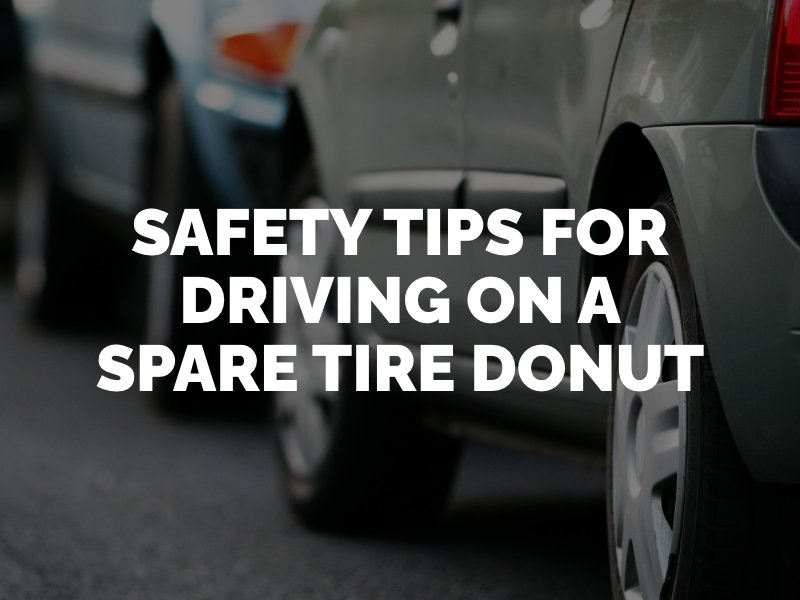Safety Tips for Driving on a Spare Tire Donut
If you pop a tire on a drive, you may need to temporarily replace it with a “donut” – a term used to refer to a compact spare tire or one that is not full size. Donut tires are designed to be used temporarily. They are not for permanent or long-term use. The misuse of a donut could lead to a dangerous tire blowout and a related car accident. Use these tips to stay safe when using a spare tire donut.

Check the Condition of the Spare
It is common for a spare tire or donut to remain in the trunk of a vehicle for months or even years before being used to replace a flat tire. It is important to inspect your donut before installing it on your vehicle. Look for potential hazards in your tire, such as worn-down tread or flaws in the sidewall. If it is in poor shape, the donut is not safe to use and needs to be replaced. You should also ensure the proper tire pressure based on the recommendation printed on the tire itself.
Slow Down
Although a full-size spare tire does not have any driving restrictions, a temporary spare or donut tire requires drivers to take certain precautions and alter their typical driving behaviors. This includes driving at a much lower speed. A donut tire is only built to withstand speeds of around 50 miles per hour, at the most. Check your vehicle’s Owner’s Manual to verify the top speed that is safe with a donut.
Drive Short Distances Only
Do not rely on a spare tire for long drives or for any substantial amount of time. Donut tires are meant to be temporary solutions only long enough to allow a vehicle owner to get the donut exchanged with a full-size replacement. Check your Owner’s Manual for the maximum distance recommendations for driving on a spare. Compact temporary tires typically should not be driven longer than 50 to 70 miles.
Avoid Major Roads
Do not drive on major roads, such as freeways and interstates, as much as possible while using a donut spare. Instead, choose local roads and rural roads that have lower speed limits. If you have to enter a freeway, restrict your vehicle to a safe speed and stay in the right lane (slow lane). Exit the freeway as soon as you can. Some states allow you to use your hazard lights while driving on a donut, as well.
Understand the Affected Systems
Driving on a donut will affect multiple motor vehicle systems. It is crucial to understand the effects of using a spare tire so that you can safely accommodate these changes and adapt your driving behaviors. The affected systems may include the anti-lock braking system, wheel-speed sensor, differential, traction and cruise control.
Handle the Car With Care
Your motor vehicle will drive differently on a donut compared to a full-size tire. Personal injury attorneys in Los Angeles suggest keeping yourself and others on the road safe by handling your car with extra care. A good rule of thumb is to drive as you would in dangerous weather conditions, such as rain or ice. For example, you should increase your stopping distance and take curves with caution.
Replace the Donut As Soon As Possible
For optimal safety, keep a spare donut tire on your vehicle only long enough to drive to the nearest auto mechanic for a regular replacement. Do not plan on leaving the compact spare on your vehicle any longer than is necessary, as this could put you at risk of dangerous tire problems and equipment failures. If your donut pops or goes flat while driving, replace it with a standard tire rather than mending the spare.
